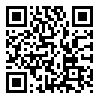BibTeX | RIS | EndNote | Medlars | ProCite | Reference Manager | RefWorks
Send citation to:
URL: http://jpbud.ir/article-1-1487-en.html
2- Institute for Management and Planning Studies (IMPS)
Today with obsolescence policy of import substitution industrialization, countries are opening their commercial doors to each other. But one of the problems of developing countries is high rate of educated unemployed people. Iran is facing tow phenomena. The first is High rate of educated unemployed people and the second is the increasing in the participation rate. In this survey with information of 49 countries we found that firstly, openness result in increasing the ratio of the educated workforce to total workforce. Secondly, the service sector has more effective than the industrial sector in the ratio of demand of educated workforce. Third, for the entire of 49 countries listed, the ratio of high-tech exports to total exports has a poorly positive impact on the ratio of educated workforce. And forth, the capital output ratio has a negligible positive impact on the ratio of educated workforce to total workforce.
Received: Apr 16 2017 | Accepted: May 13 2018 | ePublished: Mar 18 2019
| Rights and permissions | |
.jpg) |
This work is licensed under a Creative Commons Attribution 4.0 International License. |







